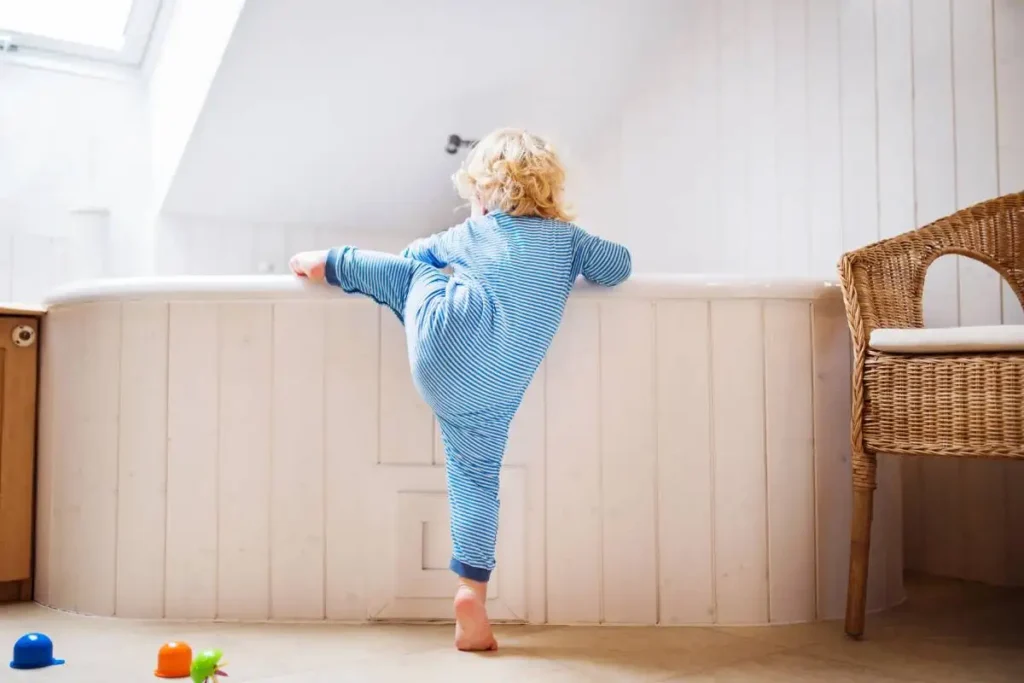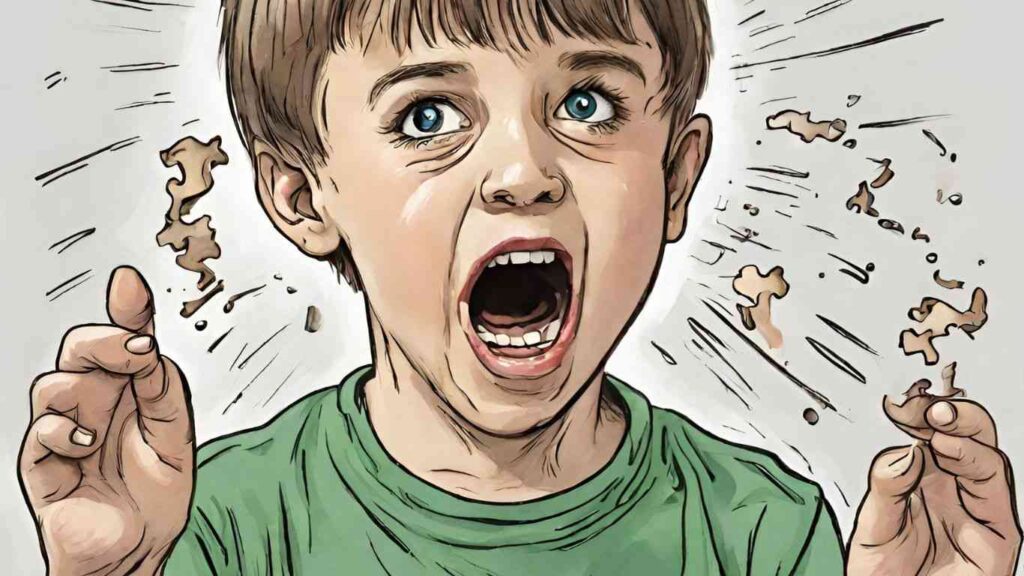It’s not uncommon to see a young child climbing on furniture, but for autistic children, this behavior can be especially pronounced. Recent surveys estimate that over 50% of autistic children exhibit frequent climbing on objects like shelves, tables, and couches. This may startle parents who aren’t expecting to see their child suddenly up on top of the refrigerator or scaling a bookshelf like a jungle gym.
While climbing behaviors may seem harmless at first, they can pose safety issues that parents need to address. At the same time, it’s important to understand why autistic children engage in these behaviors and support their development. With the right approach, parents can curb potentially dangerous climbing while meeting their child’s needs.
Reasons Autistic Children Climb
Many autistic children engage in climbing behaviors for a variety of reasons:
Seeking sensory input: Climbing provides intense proprioceptive and vestibular input that can feel soothing. The deep pressure and heavy work of climbing help autistic kids regulate their senses. They may crave activities that stimulate their sense of balance and spatial awareness.
Exploration and curiosity: Autistic children are often very curious about their environment. They want to explore their surroundings and gain new perspectives by climbing. It allows them to see and experience the world differently. Their play skills may be underdeveloped, so climbing becomes an outlet for curiosity.
Communication frustration: Some autistic kids have limited communication skills. Climbing furniture or other unsafe objects may be their way of expressing needs or protesting unmet needs. It can signify boredom, seeking attention, avoiding a non-preferred task, or communicating pain or discomfort.
Self-soothing behavior: Climbing can also serve as a self-soothing mechanism for some children. The repetitive motion and heavy work involved can have a calming effect during times of stress or anxiety. The elevation and rocking sensation may provide comfort.
Safety Concerns
Climbing behaviors in autistic children pose some key safety risks that parents should be aware of.
Falling and Injury Risk
One of the biggest concerns with climbing is the risk of falling and injury. Autistic children may have poor safety awareness and climb in dangerous ways, increasing their chance of falling. Falls from furniture or climbing structures can lead to cuts, bruises, broken bones, head injuries, and other medical issues requiring emergency care. Parents should do their best to limit access to climbable objects to reduce this risk.
Damage to Furniture and Belongings
Climbing children can also unintentionally damage furniture, wallpaper, shelves, and other household items. They may grab onto unstable objects like lamps or decorations that can fall and break. The force of climbing may also weaken furniture over time. Parents may need to remove fragile items and anchor heavy furniture/shelves to walls. Accepting some wear and tear may be necessary.
Wandering/Elopement
If a child’s climbing enables them to reach doors, windows, or gates, it presents a serious wandering/elopement risk. Children may impulsively climb and exit the home when unsupervised. Securing exits, using alarms, and constant supervision can help mitigate this safety issue. Elopement is frightening and dangerous for the child.
Preventing Climbing Behaviors
Climbing behaviors in autistic children often stem from sensory seeking or a need for stimulation. While climbing can be dangerous, there are ways to prevent or reduce these behaviors through positive and proactive strategies:
Providing alternative sensory input – Determine what need the climbing is fulfilling and provide safer outlets for that input. For example, set up a small indoor climbing wall, or hanging equipment, or create a “yes space” with cushions and soft textures if seeking vestibular input. Or provide fidget toys and oral stimulators if seeking tactile input. Engaging the senses can satisfy the underlying cause.
Childproofing the home – Reduce access to climbable furniture by securing bookcases and dressers to walls, using corner guards on sharp table edges, placing cushions around coffee tables, and keeping tempting surfaces clutter-free. Also, check for any structural dangers like loose banisters. Make the environment as safe as possible.
Reinforcing rules – Use simple, clear language to explain rules about climbing and reinforce them consistently. For example, “feet stay on the floor” or “only climb at the playground.” Visual aids like picture schedules can help. Reward following rules with praise and engagement.
Responding to Climbing
When autistic children engage in climbing behaviors, parents and caregivers need to respond calmly and patiently. Losing your temper or reacting harshly can increase a child’s anxiety and make the situation worse. Instead, use a neutral, matter-of-fact tone to redirect them to a preferred toy or activity that engages their interests. Provide lots of praise and positive attention when they stop climbing and choose appropriate play. Reinforcing good behaviors teaches what you want them to do while reducing attention to climbing helps extinguish it. With a consistent approach, most children eventually learn more constructive ways to play and explore their environment. Patience is key as it may take time and repetition for climbing behaviors to fade.
Teaching Replacement Behaviors
Many autistic children climb as a form of sensory stimulation. Rather than simply discouraging climbing, it can be helpful to teach and reinforce replacement behaviors that meet the child’s sensory needs more safely. Here are some strategies:
Model-appropriate climbing outlets
Set up a small indoor rock climbing wall or climbing dome. Supervise the child while they climb up and down. Praise them for using the safe climbing structure.
Take the child to a playground and demonstrate appropriate climbing on equipment like ladders, slides, and jungle gyms. Encourage them when they imitate you.
Build an outdoor mini obstacle course with ramps, tunnels, stairs, and platforms. Make a game of taking turns going through it together.
Use picture schedules and social stories
Create a visual schedule showing times and places when climbing is allowed versus not allowed. Review this schedule repeatedly.
Read social stories together about safe climbing versus unsafe climbing.
The key is providing positive alternatives while limiting access to unsafe climbing opportunities. With consistency and patience, replacement behaviors can be taught.
Seeking Professional Help
Many parents find it beneficial to seek professional help from occupational therapists, behavioral therapists, or other specialists to address climbing behaviors in autistic children. These professionals can provide expertise and support.
Occupational Therapy
Occupational therapists are trained to help people develop, recover, and improve skills needed for daily living. They frequently work with autistic children. An occupational therapist can evaluate a child’s sensory needs and motor skills to understand what drives the climbing urge. They can suggest modifications and activities to meet sensory needs in safer ways, like setting up a small indoor rock wall or hanging swings. Occupational therapists can also help build skills so a child can better control impulses and follow safety rules.
Behavioral Therapy
Applied behavior analysis (ABA) therapists specialize in reinforcing positive behaviors and redirecting unwanted behaviors. An ABA therapist will carefully observe a child to understand what motivates the climbing and triggers the urge. The therapist can then develop a plan to teach and reward safer replacement behaviors. They can also determine how to minimize reinforcement of climbing behaviors. ABA therapy is highly customizable to each child’s needs, so an ABA therapist can be very helpful in addressing climbing challenges.
Making Adaptations
Some parents find that providing a safe way for their child to climb helps reduce unsafe climbing behaviors. There are a couple of options to consider:
Add climbing holds: Installing climbing holds, handles or grips on walls is one approach. Choose smooth, comfortable shapes at varying heights that allow climbing one step at a time. Only install on very sturdy walls, and supervise use.
Provide small indoor climbing structure: A small climbing wall, plastic rock wall, or jungle gym can give an appropriate climbing outlet. Look for versions made for home use that can be secured to a wall or floor. Make sure it’s age-appropriate and properly assembled/installed. Supervise at all times.
Having a designated climbing structure or climbing wall section can satisfy the sensory need to climb. It also provides an opportunity to teach about climbing safely. With a consistent and patient approach, over time an autistic child can learn when and where climbing is acceptable.
Supporting Development
Climbing can provide important developmental benefits for autistic children. While safety must come first, allowing climbing in a supervised, controlled environment can support growth.
Climbing builds strength and coordination as children pull themselves up, balance, and grip objects. It allows them to receive needed sensory input as they feel different textures and test their abilities. Climbing also lets children develop a sense of independence and autonomy as they explore their environment.
With some accommodation, climbing can be directed into positive outlets. Low, stable furniture or playground equipment creates safer opportunities. Soft mats, helmets, and spotters reduce injury risks. Redirecting the urge to climb into physical activities builds athletic skills. Outdoor exploration develops confidence and self-sufficiency.
Rather than fully restrict climbing, parents can gently guide it towards productive ends. This allows children to thrive while respecting their needs and abilities. The key is making the environment safe, so natural development is fostered, not limited. With some care, climbing behaviors can give children the strength, coordination, input, and independence they need to grow.
Conclusion
Climbing behaviors in autistic children can present challenges for caregivers, but there are ways to respond constructively. The key is understanding why climbing occurs, taking safety precautions, teaching replacement skills, adapting to the environment, and seeking professional support.
Some of the main points covered here include:
- Autistic children may climb to satisfy sensory needs, gain perspective, feel in control, or due to impulsivity. Climbing is not meant as misbehavior.
- Take safety precautions like using helmets, supervision, securing furniture, and softening floors. But avoid excessive restrictions.
- Reinforce positive behaviors and teach replacement skills like climbing walls or asking for hugs. Use visual cues.
- Make adaptations like climbing equipment, elevated safe spaces, or schedules with active time. Accommodate sensory needs.
- Seek occupational therapy, behavioral therapy, parenting classes, and support groups as needed.
Climbing can be one way autistic children explore their world. With understanding and some adaptations, caregivers can find positive ways to address it. The goal is to keep children’s natural curiosity and need to develop skills while also maintaining safety. There are many resources available, so caregivers do not need to feel alone in figuring this out.







